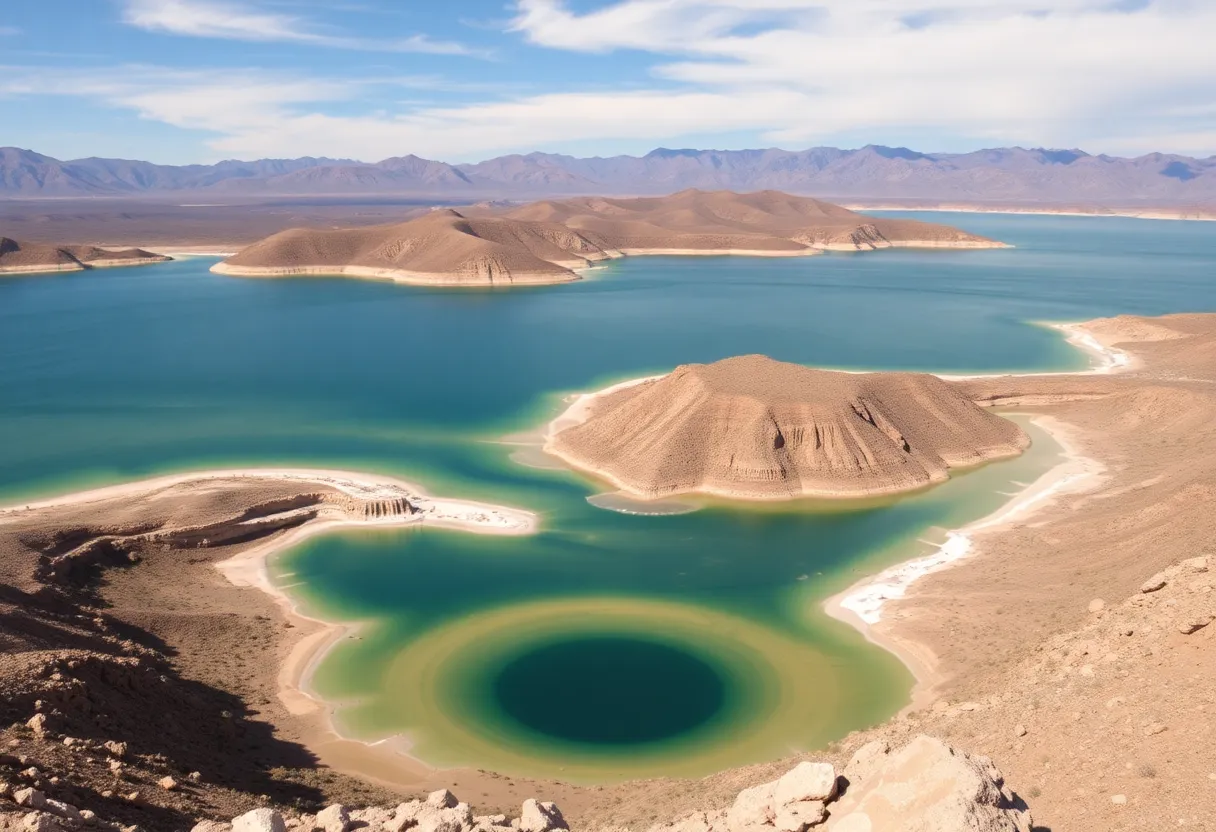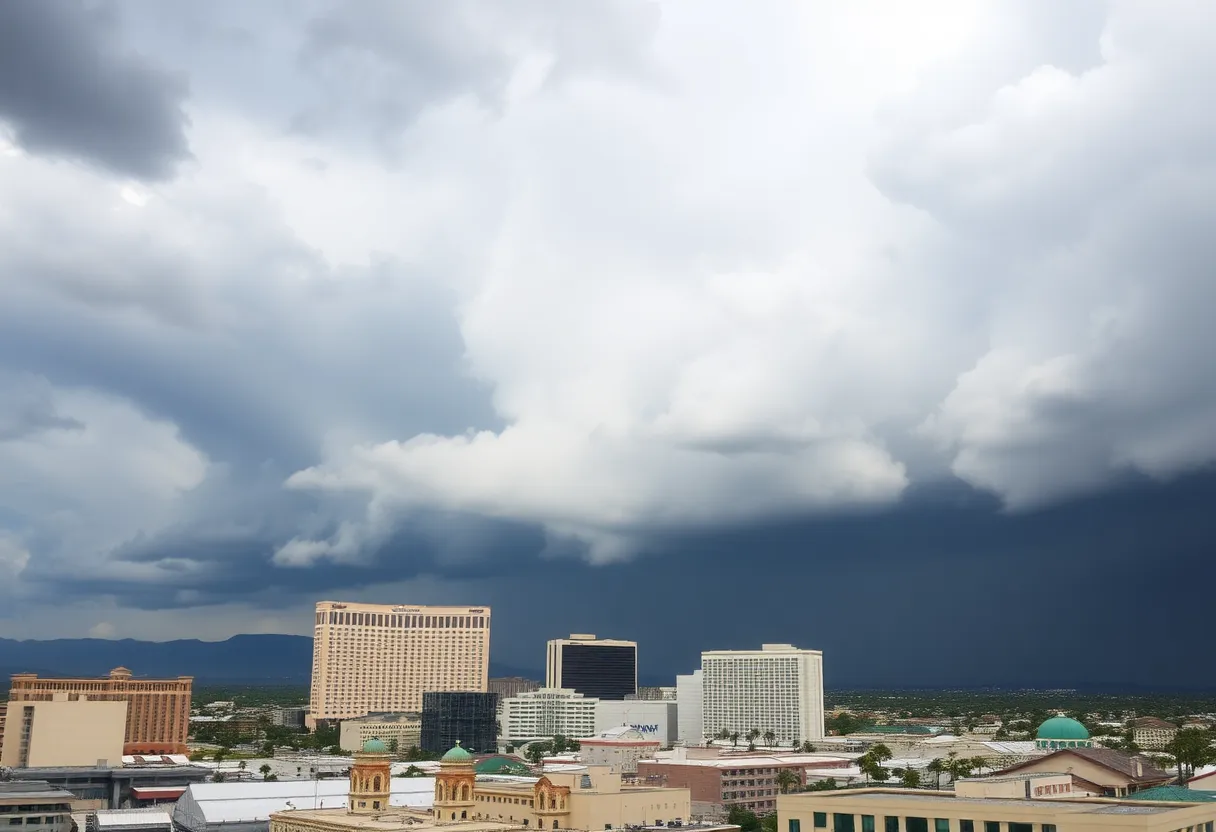News Summary
Las Vegas is preparing for a significant 7% reduction in its water supply from the Colorado River, raising concerns about future water scarcity. Lake Mead, a critical reservoir, is currently about 175 feet below its full capacity. With ongoing negotiations among water-sharing states and a potential ‘Tier 2’ water shortage looming, effective conservation efforts are vital. The urgency for a sustainable water management plan is intensifying as local authorities and environmental groups emphasize the need for collaborative solutions amidst changing climate conditions.
Las Vegas is bracing for significant reductions in water supply as the state’s allocation from the Colorado River drops by 7%. This trend is expected to persist into next year amid rising concerns about water scarcity in the region. The ongoing water shortage is particularly noticeable at Lake Mead, where visitors can see a distinct “bathtub ring” around the shoreline, signaling declining water levels.
According to projections from the Bureau of Reclamation, Lake Mead could reach its lowest levels in recorded history within the next two years. Currently, the reservoir’s water elevation is approximately 1,054 feet—a striking 175 feet below its full capacity. Only 31% of its storage capacity is being utilized, underscoring the severity of the situation.
The guidelines governing water use among the seven states sharing the Colorado River will expire next year. With no replacement plan in place so far, the urgency to address future water management is mounting. Legal negotiations for a new framework are ongoing but are not being made public at this time. Issues surrounding water use reductions have led to disagreements among the states involved, and a consensus must be reached by early November to avoid federal intervention.
Water Management Challenges
Water cuts for various states include an 18% reduction for Arizona, a 7% cut for Nevada, and a 5% decrease for Mexico. For Nevada, this translates to a loss of 21,000 acre-feet of water; however, local conservation efforts are expected to mitigate the impact, as the state utilized 212,000 acre-feet last year—down nearly 6% from the previous year. Over the past two decades, Nevada’s overall consumption of Colorado River water has decreased by 36%, demonstrating a commitment to sustainability.
This year’s reductions signal a troubling trend, with projections that Lake Mead’s elevation could dip below 1,050 feet by July 2026, marking the onset of a “Tier 2” water shortage that would necessitate further cuts for Nevada. Experts warn that the river’s flow may decrease by 3 million acre-feet over the next decade, compounding the urgency for effective conservation strategies. The Colorado River Basin serves as a vital water source for approximately 40 million people across several states and Mexico, heightening the stakes for all involved.
New Approaches to Water Allocation
As negotiations continue, a “supply-driven concept” is being discussed among states. This approach would use historical river flows to determine future water allocations, allowing states to adapt more responsively to current water conditions. Proponents believe that such a strategy could lead to more effective reductions in overall water use.
Amid these discussions, environmental watchdog groups emphasize the urgent need for agreement, particularly given the climate change and drought conditions threatening the water systems’ sustainability. Experts have repeatedly pointed to these factors as critical contributors to the ongoing water crisis.
Future Outlook
The Southern Nevada Water Authority (SNWA) has been proactively preparing for a warmer, drier future for the last two decades, making necessary infrastructure investments to ensure continued water access, even in the worst scenarios, such as a “dead pool” situation at Lake Mead. Current assessments by federal water managers are scheduled for August each year to evaluate water shortage levels based on projections from both Lake Mead and Lake Powell.
If negotiations do not yield results by mid-November, the federal government may step in to make decisions regarding water use and management. With Lake Mead potentially dropping to around 1,038 feet by the end of June 2027, which would mark a new historic low, the need for immediate action is clear.
Deeper Dive: News & Info About This Topic
HERE Resources
Panel Discussion Highlights Land Access Challenges in Las Vegas
Nevada Legislature Shelves Key Housing Bills
Southern Nevada Faces Critical Water Shortage Challenges
Las Vegas Hosts Annual Back-to-School Fair to Support Teachers and Students
Weekend Events in Las Vegas: Music, Food, and Fun
Las Vegas Data Center Boom Faces Environmental Challenges
Las Vegas Faces Severe Housing Shortage
Las Vegas Hosts Public Meeting Addressing Environmental Concerns Over Proposed Airport
Las Vegas Faces Sharp Declines in Hotel Performance
Lake Mead Water Levels Reach Historic Lows
Additional Resources
- 8 News Now
- Wikipedia: Water Management in the Colorado River Basin
- Nevada Current
- Google Search: Colorado River water cuts
- Las Vegas Sun
- Encyclopedia Britannica: Water Supply
- Review Journal
- Google News: Lake Mead water levels
- Hoodline
- Google Scholar: Las Vegas drought management
- Santa Fe New Mexican
- Encyclopedia Britannica: Drought

Author: STAFF HERE LAS VEGAS WRITER
The LAS VEGAS STAFF WRITER represents the experienced team at HERELasVegas.com, your go-to source for actionable local news and information in Las Vegas, Clark County, and beyond. Specializing in "news you can use," we cover essential topics like product reviews for personal and business needs, local business directories, politics, real estate trends, neighborhood insights, and state news affecting the area—with deep expertise drawn from years of dedicated reporting and strong community input, including local press releases and business updates. We deliver top reporting on high-value events such as Electric Daisy Carnival, World Series of Poker, and Consumer Electronics Show. Our coverage extends to key organizations like the Las Vegas Chamber of Commerce and Three Square Food Bank, plus leading businesses in hospitality and entertainment that power the local economy such as MGM Resorts International, Caesars Entertainment, and Las Vegas Sands. As part of the broader HERE network, we provide comprehensive, credible insights into Nevada's dynamic landscape.





